VENDOR VIEW ’22: LESSONS LEARNED FROM THE PANDEMIC

A random sampling of menswear brands and showrooms share how they’ve survived the past two years and what changes they’re making in this precarious environment.
Guglielmo Melegari, Stylistico
The pandemic has taught us to cut costs and find efficiencies. Service and flexibility have become more important than ever: brands must have stock available in season to support their retailers’ e-commerce, especially since many merchants now view carrying stock as too big a risk.
We’ve also learned that being out there in the stores is essential: with 100 key accounts, we don’t need more retail partners; we just need to do more with each, encouraging and enabling replenishment in season. We also need to more carefully match the right brands with the right stores. Unfortunately, too many retailers are stuck in their ways and remain risk-adverse.
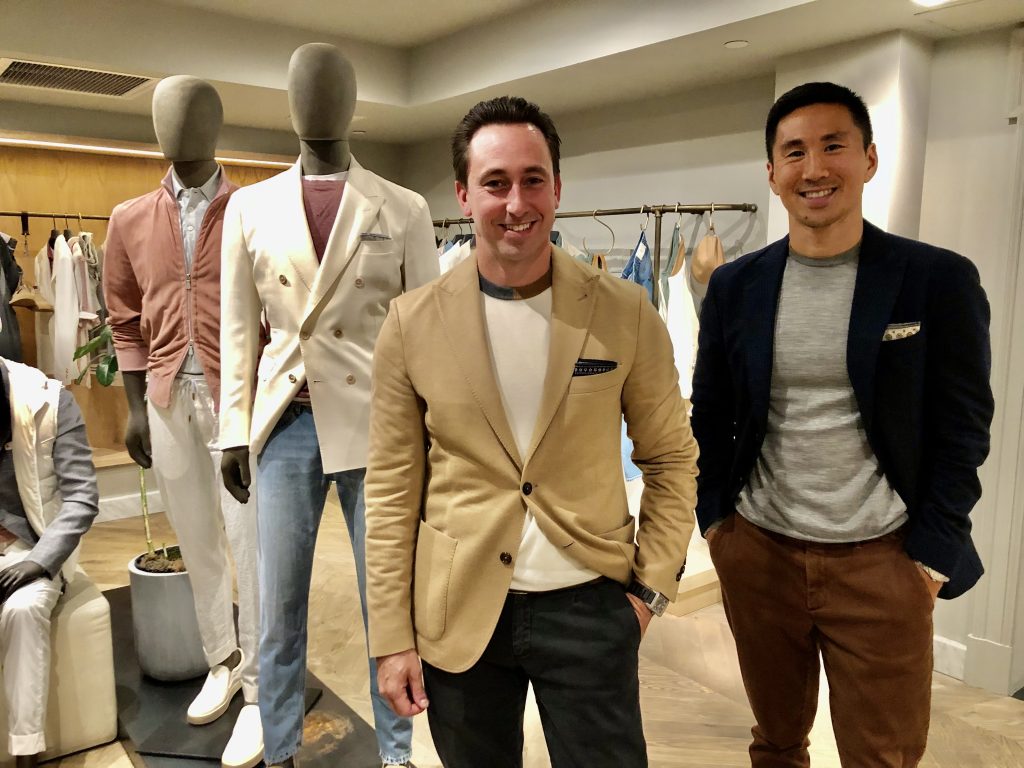
Geoff Schneiderman, Eleventy
I’ve learned that despite success with our own stores, our wholesale business is the driver: great multi-brand stores give credibility to our brand so we’re moving to be more meaningful in the stores we believe in. In fact, during the pandemic, our points of distribution dropped from 130 to 55 without negatively impacting our sales volume.
That said, our new Madison Avenue mono-brand store is doing great! It’s also helping buyers understand the impact of merchandising by collection rather than by category: since they now have to walk through our retail store to get to the showroom, they arrive inspired.
One opportunity the pandemic has offered us: new affordability of rents in luxury locations (Madison Ave, Greenwich, Palm Beach, Beverly Hills). We never would have been able to test stores in these locations pre-pandemic.

Rian Gardner, Triluxe
Pandemic lessons learned: 1.Being there for our clients with high-level customer service and strong communication in conjunction with in-season access to product and stock programs has fueled growth across all our brands. 2.The partnership and support we offered our customers through the height of the pandemic paid dividends when the buying season came back. 3.During the pandemic, we were positively reminded that relationships are king in the specialty menswear business, from wholesale to retail and retail to the end consumer.
What changes have we made since the pandemic? With supply chains extremely challenged (which will likely continue over the next 12 months), we’re very focused on made in Italy (and Europe) to ensure timely deliveries and more control. We’ll close our Fall 22 selling campaign earlier to insure on-time deliveries.
We recently launched MC2 SAINT BARTH, a Milan-based brand with an emphasis on swim and sportswear. With the post-pandemic travel craze, we saw a need for interesting swim and resort-wear. The menswear stores onboard with this category have experienced very strong selling.
As for marketing, all our brands have streamlined marketing spend, with a major focus on digital.
Our two most impactful strategies: 1. A heightened level of customer service and in-season access to key items and in-stock programs, and 2. Working closely with our brands on product development in order to bring innovative and special items to market. These, along with the injection of performance across all categories, have inspired retailers, fueled growth and will continue to be priorities for Fall ‘22.
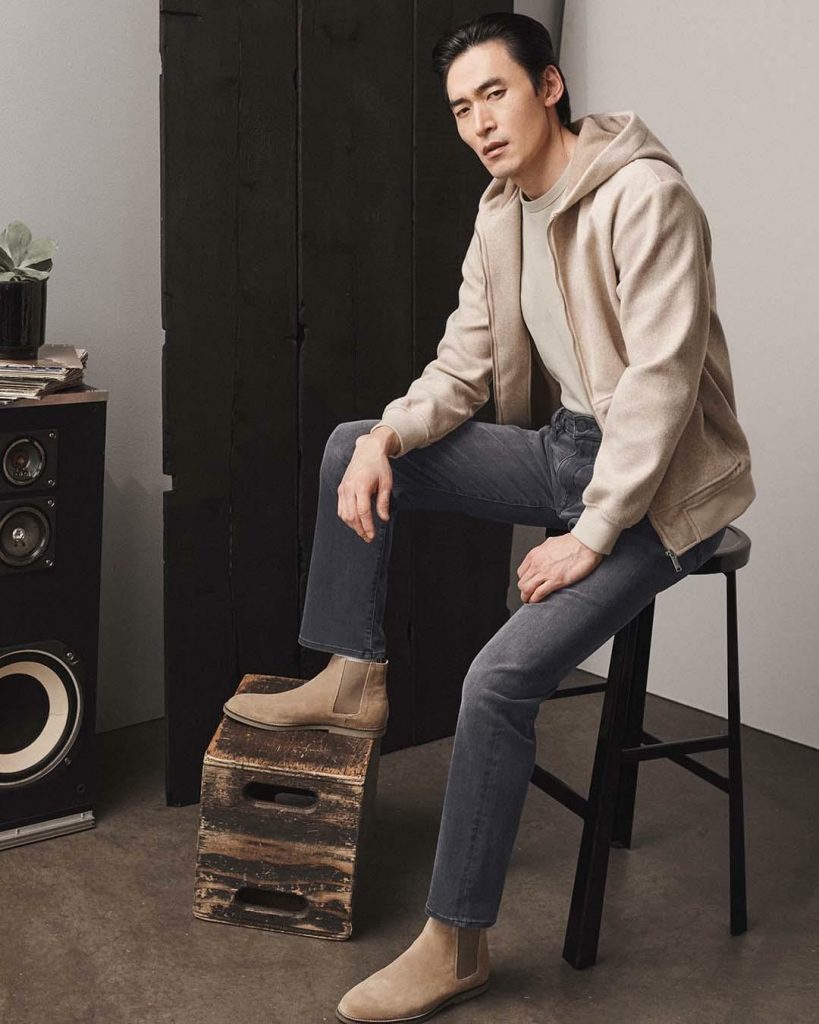
Ersin Akarlilar, chairman, 34 Heritage/Mavi
The pandemic has reinforced our emphasis on customer service. We’ve expanded our replenishment programs: we’re in-stock on a huge inventory of stretch fabrics and waist sizes 29 to 50. And unlike most other brands, we stock multiple inseam sizes: up to four in certain styles. It’s a lot of inventory but that’s our competitive advantage.
We’ve had minimal supply chain issues: we own our factories in Turkey; we recently moved and doubled the space in our NJ warehouse.
Still, there are challenges: we’ve been doing a lot of air shipping, which obviously costs more. On the plus side: we’re expanding within our existing doors. We’re going after more wholesale business, which is growing both in better independents and in Nordstrom.
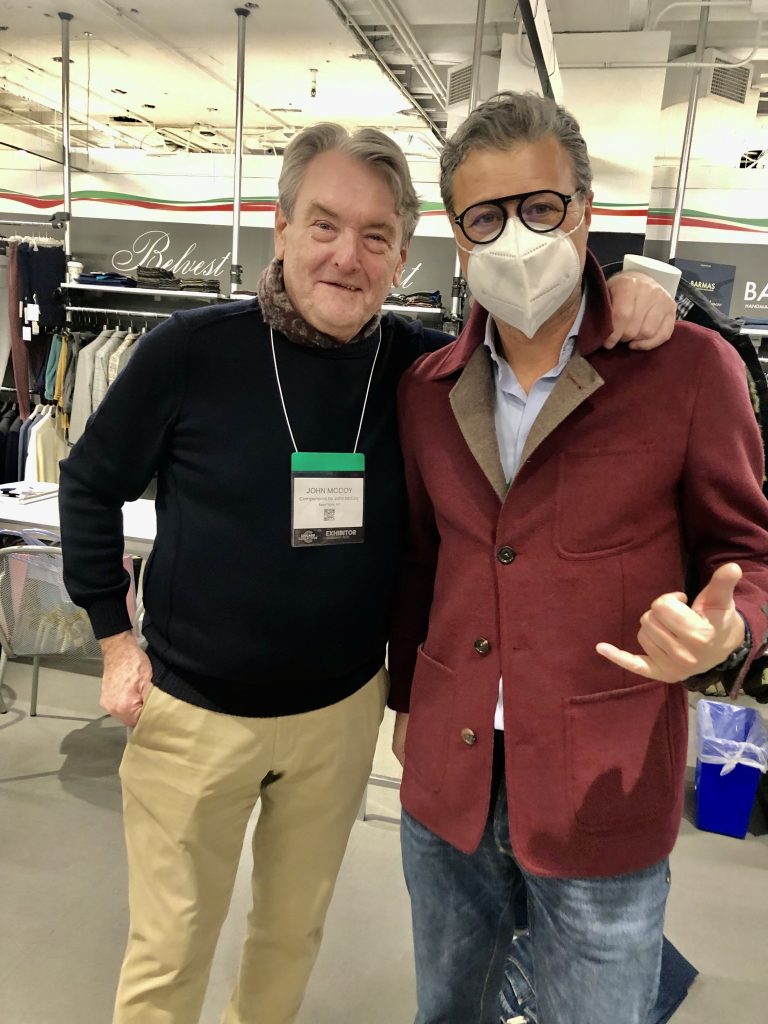
John McCoy, Components
We’ve learned that we’re entering a new era of the specialty store. Customers want to shop local and truly appreciate exclusive product and genuine service. America’s cities, including Chicago and NYC, will survive and prosper again.
The second half of 2021 sales exceeded 2019 by 15 percent. We took eight spaces at the recent Chicago show and fall 22 bookings for Gran Sasso, Masons, Partenopea, Mauro Blasi, Belvest, Barmas, and several others are already booking twenty percent above 2019.
I’ve also learned that I have to be more of an accountant, paying more attention to all the financials, and working well in advance to minimize cost increases, and anticipating supply chain issues.

Vince Marrone, Paisley & Gray
What we learned from the pandemic is that we must continue to take risks. Our customers don’t want basics: it’s all about fashion. We never lost our commitment to bring in new inventory: we took the risks and brought in goods early, even when buyers weren’t buying. Thanks to our talented designer Alison, we constantly change it up—we don’t want to compete with the knock-offs. Booking well for fall ‘22: Rebel by P&G, jeans with sportscoats, and military/field coat/cargo looks (considered an evolved suit).
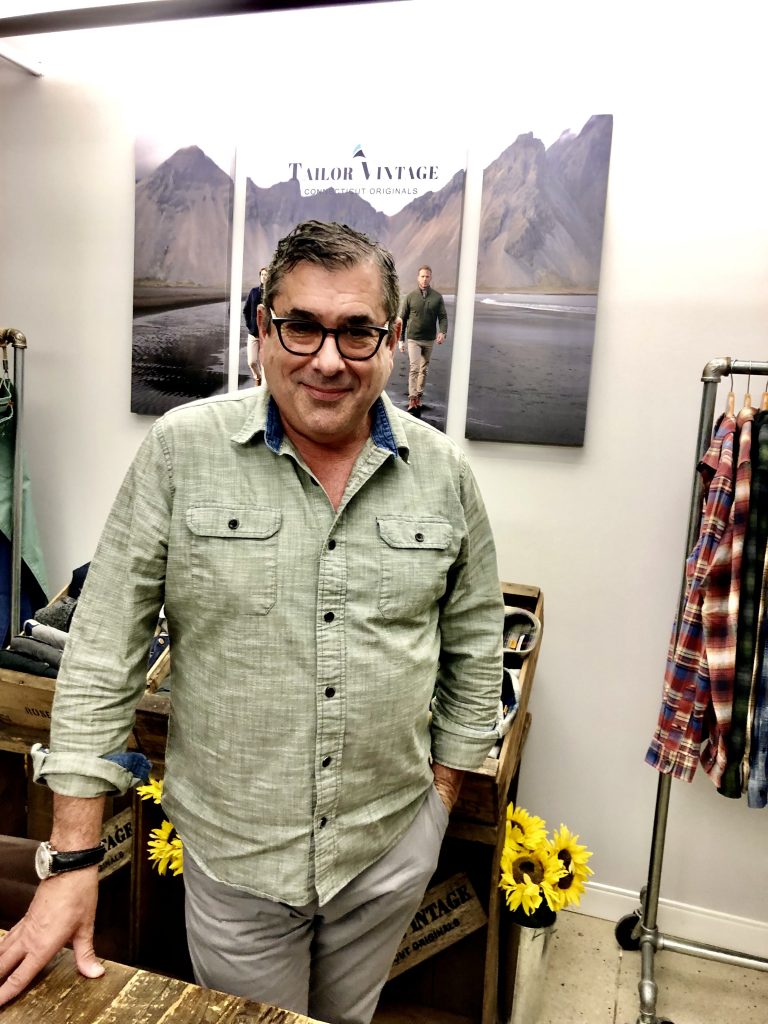
Richard Rosenthal, Tailor Vintage
I learned that the for us, the solution is licensing. I now own the brand and license the production, according to category. That said, I’m very involved in the creative for all categories and for marketing. Ecommerce is now 8 percent of our business and growing fast. Comfortable, cozy, value-priced are key buzzwords. More than 20 percent of the yarns we use are recycled.
Andrew Berg, president, Robert Graham
We’ve learned that brands must invest in content to tell their story. We’re looking to expand upon this and tell our story in new ways.
Change is the name of the game at Robert Graham although we’re always building on what’s working. Example: our successful Collectors Club concept that rewards buyers of the pricier ($398-$998 retails) art-inspired, heavily-decorated limited edition shirts for guys who want to get noticed. (After purchasing 100 shirts, this customer can create a unique design named after him.) Another key change is our increased emphasis on women’s.
Our recent metrics indicate that 40 percent of our 2021 sales were customers new to the brand. And while our wholesale business is growing, 60 percent of brand volume is done direct via our website and 27 company-owned stores. That’s up from 40 percent D2C in 2019.

David Sweedler, president, Zanella and SWIMS
The pandemic has taught us survival tactics: we were in triage mode, with an immediate goal to get stuff in. Demand is strong, stores need inventory, cashmere is in short supply. Unfortunately, for too many companies, the pandemic killed the design excitement; everyone went for basic, even the mills.
Our main goal now, as a division of Daytona, is to refocus on our luxury roots. We’re offering only best in class products at the best value made of the finest fabrics in the best factories in Italy. We’re not handcrafted one at a time like Kiton but we’re using many of the same fine fabrics.
We’re a 68-year-old company, founded in 1954. Our fall ‘22 collection is our best ever: dress trousers, soft jackets, amazing outerwear, beautiful sportshirts. Our average clothing retails are $895-$1295. We’re taking shorter margins on exclusive fabrics—Canclini shirts $398 retail, Zegna cashmere pants at $1000. Super 120s and 130s Sea Island cottons from Albini
Our distribution is Neimans, Nordstrom and over 200 better specialty stores. We’re investing twice the time on product development; we took triple the space at the Chicago show. We truly believe in the move back to luxury as upscale customers head back to the office, back to travel and back to events.
As for Swims, our goal is toexpand categories outside of footwear and to focus on really nailing key items! The brand is in 52 countries; we will build through distributors and U.S. retail, adding classifications.
On another note, I agree with Kevin Clancy about bankruptcies in 2022. We’ve not yet seen the last effects of the pandemic and probably will not for another 18 months. Many companies are still unable to shed enough cost and generate enough sales and profit to exceed the gravitational pull from the black hole caused by COVID-19. So, expect drastic changes in 2022 as businesses look at becoming more profitable and operating more efficiently with longer runways for supply chains.

Hagen Peyser, Hagen
Business has been strong! We’ve worked through most of the supply chain problems and have minimal issues in Turkey, Poland, even Italy. Of course, getting fabric has been erratic but the biggest headache is the cost of shipping, which is now up about five times what it was and will probably remain high through 2022. That said, our customers understand price increases and are still buying aggressively. We booked double our planned business for spring 22, selling an additional 5000 more dress shirts (retailing at $185 to $225). Many retailers placed their first orders with us when they couldn’t get delivery from their regular big shirt makers. Then pleased with our sell-throughs, they reordered.
Most importantly, we’ve evolved from a shirt company to a total lifestyle collection: sweaters, pants, vests, leather and suede outerwear, blazers, baby shearlings, softcoats, shirtjacs. Fall bookings at the recent shows have been crazy good!

Kareen Shaya Safier, Raffi
We learned that life often includes unforeseen changes that we cannot always control. That staying positive in challenging times is essential. That as a family-owned business, family is everything… and that family includes relatives, colleagues, friends, community, country, and the world.
We learned that we’re all interconnected so in trying circumstances, we need to support one another, be it with a phone call to check in, a zoom to cheer, a meal for essential workers, or donating to those in need. This gives us a way to come together when we have to stay apart.
Our founders Raffi and Arlette are both passionate and positive leaders, showing us that each day is a new opportunity to move forward, to get healthy, to approach the day with excitement. Our goal is to infuse that same energy into all Raffi product, since when you wear well-designed, comfortable, top quality product, you look great, feel great, and communicate greatness in your daily life.
In the past year, as we were all faced with supply chain issues, we stayed ahead of the game by securing our fabrics and yarns early in the season, booking production prior to sales to ensure on-time deliveries. We take pride in providing exceptional customer service with in-stock programs available as a 24-7 “stockroom” to our retail partners. We continued to provide that service by airing in shipments for at-once needs so we could consistently replenish reorders.
One new strategy that we implemented: creating part-time opportunities for working parents. Since Limor, Shirley and I (Raffi’s three daughters) are full-time working moms, we understand the importance of a work-life balance, and how challenging it became for women to get back into the workforce. We wanted to offer opportunities providing flexible hours (10-3 or 4) and an easy local commute.
We’re constantly evolving, growing and learning, looking to create fresh fabrics, colors and designs that are seasonless, effortless, and make you feel good! We’re grateful to have an incredible team that makes magic every day!


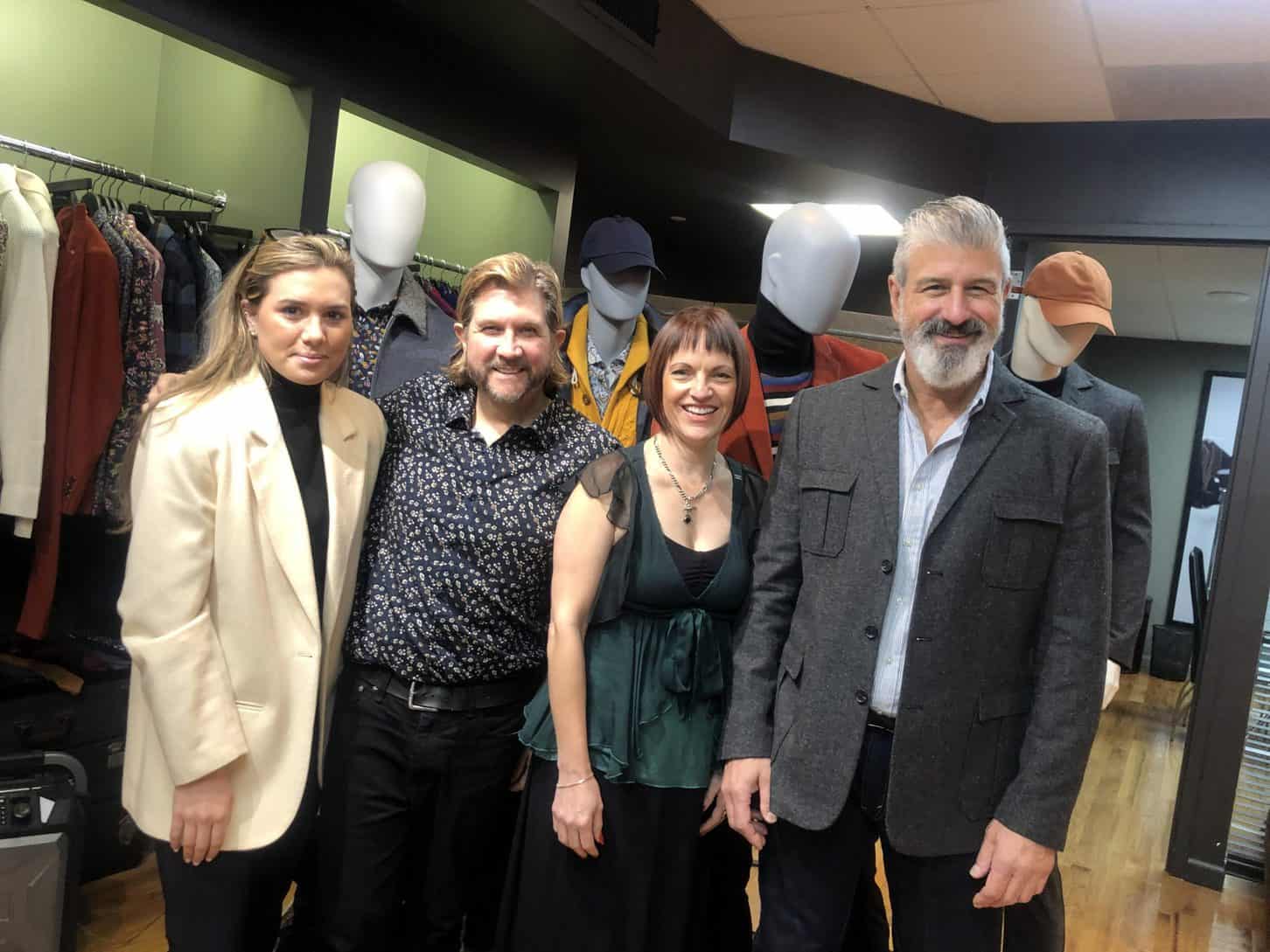
Karen, well put together and very informative. You are a master of your craft as are those you interviewed. Focus ahead and point the ship into the wind and fashion will thrive!
Thanks so much Joseph— that really means a lot to me! 😊😊